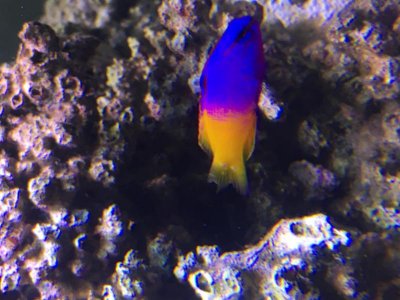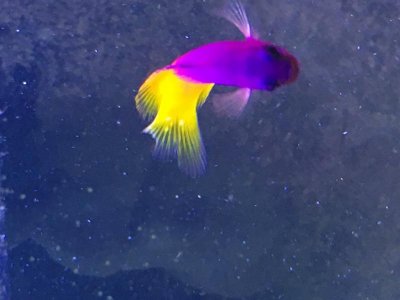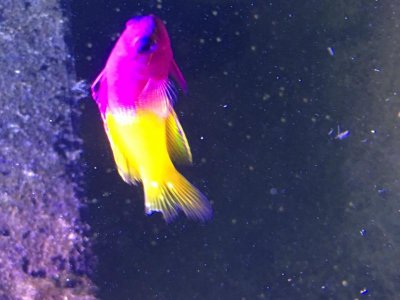jayjay5531
New member
I have no experience with marine fish diseases. I have a royal gramma basslet, a bicolor angel, a red flame angel, an orchid dottyback, a Midas blenny, and a banggai cardinal in a 65 gallon tank. All the fish have been in there for three months or longer, except the royal gramma basslet which I've had for around 3 weeks. I check and feed my fish daily, but only yesterday I noticed these white lesions on the tail, sort of like two cottony white bumps, plus part of the tail is missing (unclear if another tank member bit it or if it just degraded due to some infection). It doesn't really seem to look like the pictures of marine ich I've seen, but I can't figure out what else it could be? (Sorry the picture is so blurry!)
How should I treat it? I have two shrimp in my tank, emerald crabs, hermit crabs, and a (dark black/reddish-colored) brittle star.
By the way, the brittle star is new. After floating the bag, I added tank water to the water the was already in the bag and then waited; then I submerged the cut-open bag in the water and allowed it to climb out on its own accord (I didn't just "net it out" because I wasn't sure if exposure to air was harmful or not?) But I guess this was a bad choice because it could have introduced disease into the tank via the tank water from the LFS.
How should I treat it? I have two shrimp in my tank, emerald crabs, hermit crabs, and a (dark black/reddish-colored) brittle star.
By the way, the brittle star is new. After floating the bag, I added tank water to the water the was already in the bag and then waited; then I submerged the cut-open bag in the water and allowed it to climb out on its own accord (I didn't just "net it out" because I wasn't sure if exposure to air was harmful or not?) But I guess this was a bad choice because it could have introduced disease into the tank via the tank water from the LFS.



